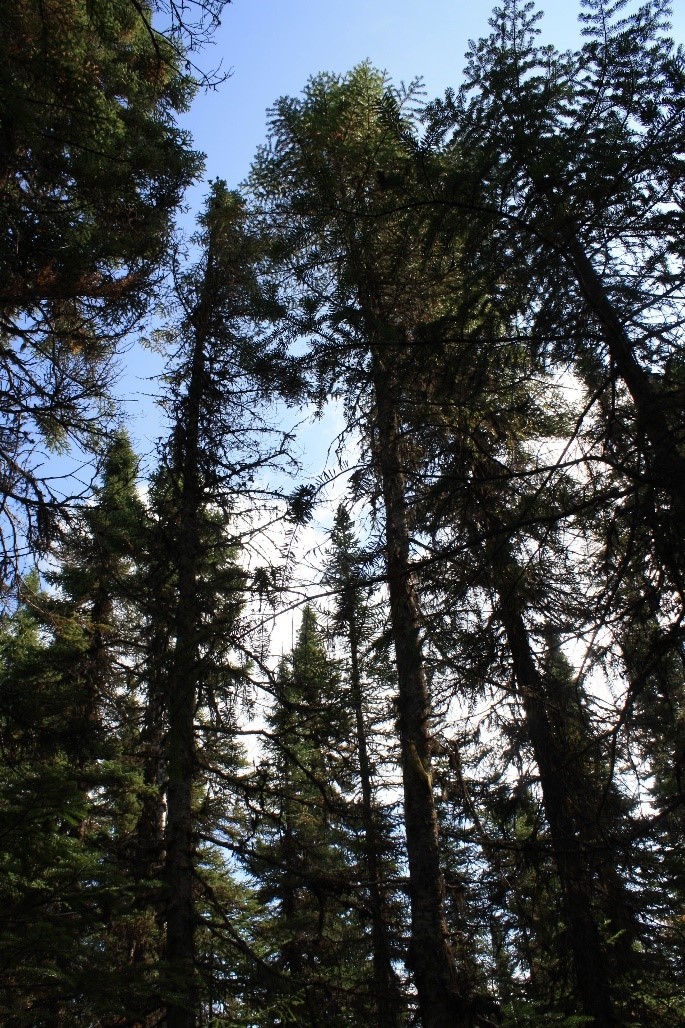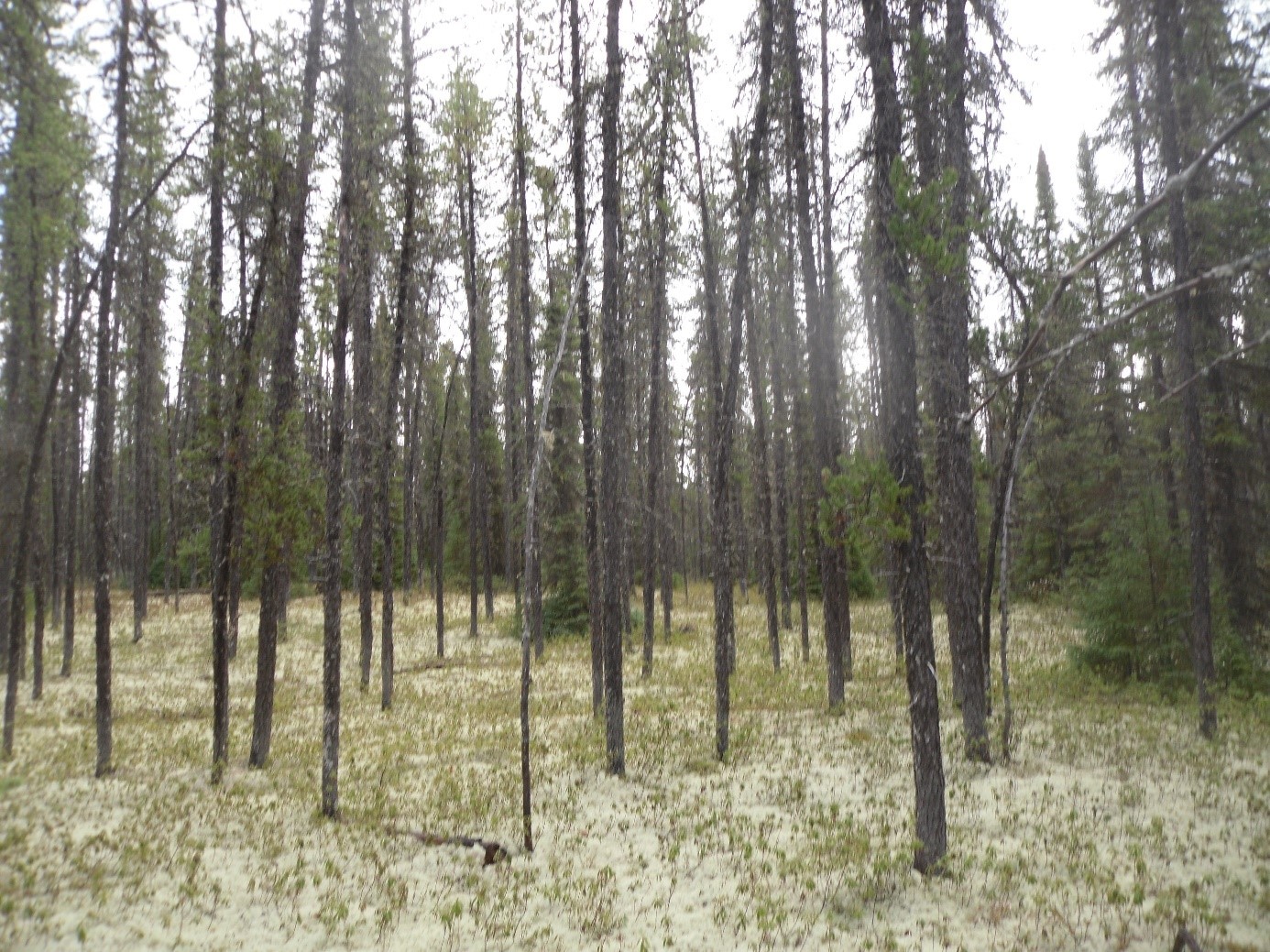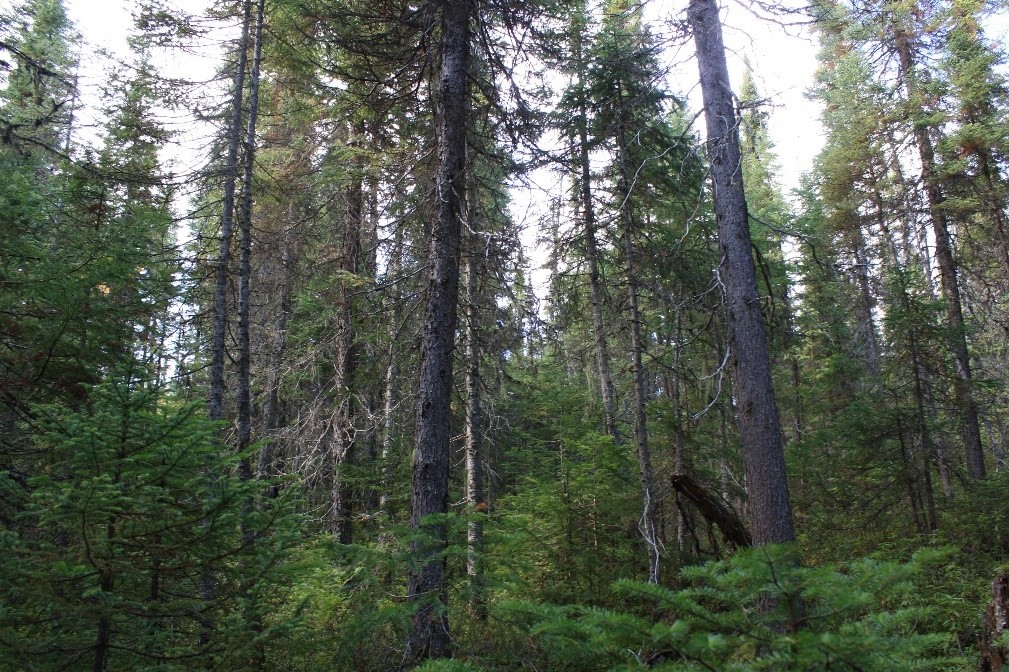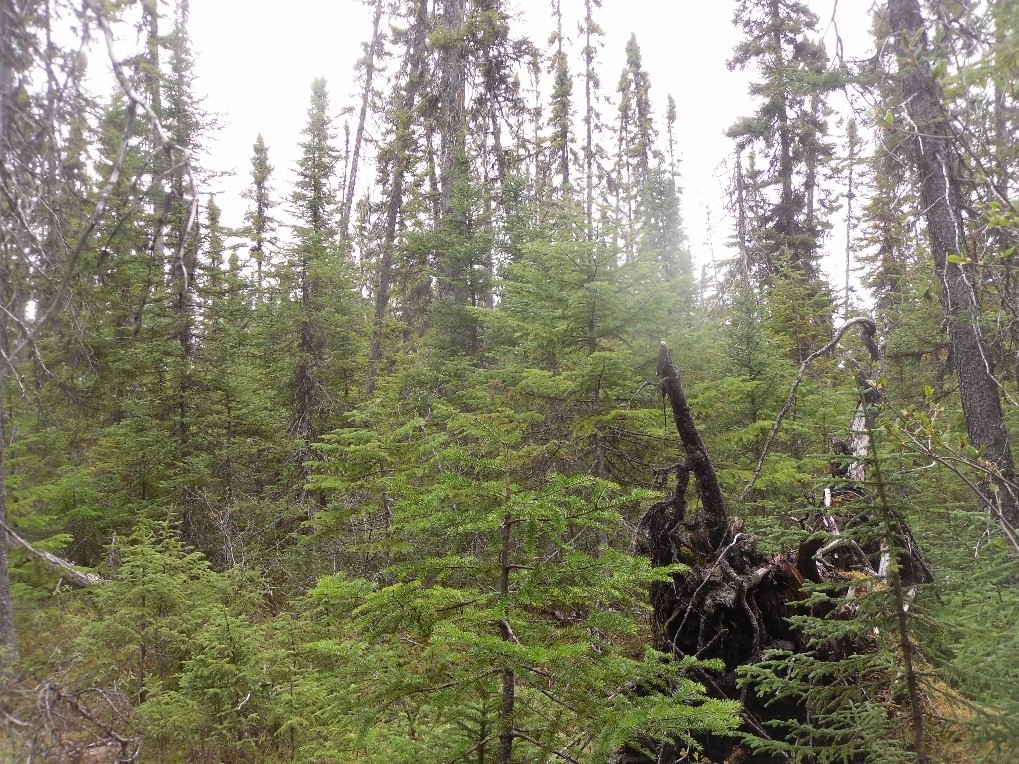The Symphonies
The Boreal Symphonies are based on tree-ring growth data from dozens of old boreal forests in Quebec. These data are used in research to reconstruct the history and dynamics of forest stands over the centuries. Their transcription into music, where the pitch of the notes depends on the importance of the tree's annual growth, makes it possible to reconstruct the life of these forests up to the 1700s!

A black spruce stand
Moreover, each forest has its own unique history. The diversity of these symphonies illustrates the richness of forest dynamics in Quebec's boreal regions.
The forest 90 years after the fire, the example of the even-aged forest
This is one of the first symphonies produced for the project. It is an 86-years old forest composed mainly of black spruce and paper birch, located about 200 km north of Lac Saint-Jean, Quebec. It is called “even-aged” because the seeds of these trees germinated almost all at the same time, following a forest fire that occurred around 1930.

Even-aged boreal forest, where black spruce and jack pine blend here. The structure of the forest is very simple, with trees of the same size.
The even-aged forest is the first stage of what we name “forest succession”, i.e. the changes in composition, appearance, and structure that occur in forests over time. In the absence of any new major disturbances in the next few years, these trees will eventually die and be replaced by new black spruces and by balsam firs. In Quebec's boreal forests, these are the two main species that are able to regenerate easily under the shade of mature trees. The paper birch is unable to do so and requires full access to light, for example after a forest fire.
Following the even-aged forest, the old-growth succession stage
The boreal symphonies are mostly produced from what we call “old-growth forests” or “ancient forests”. These different names describe forests where several generations of trees of different ages and sizes live together. It is towards this type of forest that even-aged stands - i.e. stands of the same age - naturally evolve over time, hence the use of the qualifiers “old” or “ancient”. When one or more dominant trees die in these forests, they leave space for the smaller trees below them, which can then take their place. The result is a more complex symphony than in even-aged forests, where generally mid-range notes are mixed with short, high-pitched flashes revealing this small-scale mortality/regeneration process.

Old black spruce forest, stand structure becomes more complex, with trees of all sizes and ages
Old-growth forest life, anything but placid
The periodic replacement of trees that have died alone or in groups by new and younger trees is the ecological process that defines old-growth forests. These mortality phases are usually subtle, where a single large tree dies of old age and creates a small gap in the canopy.
However, some events can cause much more significant mortality, such as some epidemics of defoliating insects. By killing a large proportion of the canopy, such disturbances significantly change stand dynamics. In most cases, this allows the majority of small trees, which were previously under the shade of the larger ones, to significantly increase their growth, almost at the same time to take their place.
In Quebec, the spruce budworm is the main defoliating insect in the boreal forest. Although its impact on the forests may seem spectacular, the mortality it causes is to the benefit of other trees. This can be heard at the end of the symphony presented here: a brief descent into the bass followed by an explosion of high notes. The small trees have taken advantage of the space created by the death of the tall ones to significantly increase their growth and size.

As a result of the budworm epidemic, the most affected trees die, forming gaps in the canopy. Fortunately, regeneration is ready to replace them.
